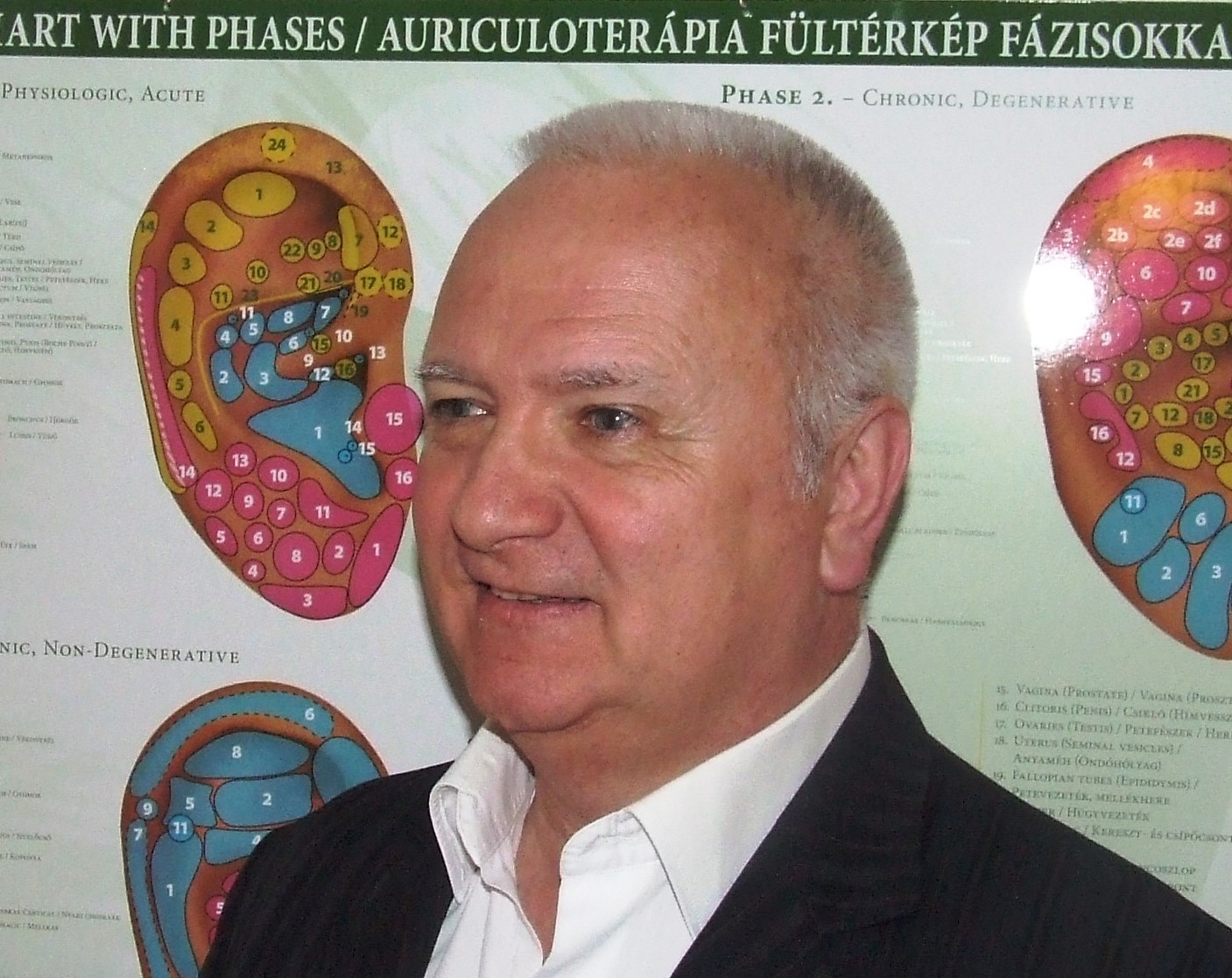Track 1: Human Vaccines - Infectious & Non Infectious Diseases
A vaccine is an inactivated form of bacteria or virus that is injected into the body to simulate an actual infection. Because the injected microorganisms are dead, they dont cause a person to become sick. Instead, vaccines stimulate an immune response by the body that will fight off that type of illness. It covers infectious disease targets and non-infectious disease targets. To generate vaccine-mediated protection is a complex challenge. Currently available vaccines have largely been developed empirically, with little or no understanding on how they activate the immune system. Their early protective efficacy is primarily conferred by the induction of antigen-specific antibodies. However, there is more to antibody-mediated protection than the peak of vaccine-induced antibody titers.
Related Vaccines Conferences | Immunology Conferences | World Vaccine Congress
Related Societies:
Europe:
European Society for Paediatric Infectious Diseases; European Union Geriatric Medicine Society; European Federation of Immunological Societies; European Academy of Allergy and Clinical Immunology; Royal Society of London; Epidemiological Society of London; Edward Jenner Society
USA:
The Anti-Vaccination Society of America; Infectious Diseases Society of America; Association of Immunization Managers; Clinical Immunology Society
Asia and Middle-East:
Japanese Society for Immunology; Singaporean Society for Immunology; Australasian Society of Clinical Immunology and Allergy
Track 2: Vaccine Research & Development
Vaccine Development is an activity that focuses on a variety of technological initiatives and applied research, which enhance and promote improved systems and practices for vaccine safety. In the past year, the unprecedented Ebola disease outbreak galvanized research and industry response and as we continue to search for solutions, we must review the lessons learned in order to overcome the current challenges. Vaccines development is a long, complex process, often lasting 10-15 years and involving a combination of public and private involvement. The current system for developing, testing, and regulating vaccines developed during the 20th century as the groups involved standardized their procedures and regulations.
Related Vaccines Conferences | Immunology Conferences | World Vaccine Congress
Related Societies:
Europe:
European Academy of Paediatrics; European Malaria Foundation (e-malaria Foundation); European Malaria Vaccine Development (EUROMALVAC); European malaria Vaccine Initiative (EMVI)
USA:
Autism Science Foundation (ASF); Childhood Influenza Immunization Coalition (CIIC); Edward Jenner Vaccine Society; Global Polio Eradication Initiative
Asia and Middle-East:
Lebanese Society of Allergy and Immunology; Moldavian Society of Allergology & Immunology; Moroccan Society of Allergology and Clinical Immunology
Track 3: Next-Generation Vaccine Delivery Technologies
Drug delivery systems are engineered technologies for the targeted delivery and/or controlled release of therapeutic agents. Drugs have long been used to improve health and extend lives. The practice of drug delivery has changed dramatically in the last few decades and even greater changes are anticipated in the near future. Biomedical engineers have not only contributed substantially to our understanding of the physiological barriers to efficient drug delivery—such as transport in the circulatory system and drug movement through cells and tissues—they have contributed to the development of a number of new modes of drug delivery that have entered clinical practice. Role of vaccine delivery technologies includes rational development of vaccines, achieving immunization goals, supporting best clinical practice.
Vaccines continue to revolutionize our ability to prevent disease and improve health. With every technological advance, we are able to extend the benefits of vaccines to more people and provide better protection from life-threatening infectious diseases.
Related Vaccines Conferences | Immunology Conferences | World Vaccine Congress
Related Societies:
Europe:
European Society for Immunodeficiency; French Society of Immunology; Immunology of Diabetes Society; Deutsche Gesellschaft für Immunologie
USA:
American Academy of Paediatrics (AAP); American College Health Association (ACHA); Association of Immunization Managers (AIM); Association for Professionals in Infection Control and Epidemiology (APIC)
Asia and Middle-East:
Asia Pacific Association of Allergy, Asthma, and Clinical Immunology (APAPARI); Asia Pacific Association of Pediatric Allergy, Respirology and Immunology (APAPARI); Commonwealth of Independent States Society of Allergology and Immunology (CIS Society)
Track 4: Vaccines Safety & Efficacy
Vaccines are the best defense we have against serious, preventable, and sometimes deadly contagious diseases. Vaccines are some of the safest medical products available, but like any other medical product, there may be health risk. Accurate information about the value of vaccines as well as their possible side-effects helps people to make informed decisions about vaccination. The safety of vaccines is carefully monitored, starting early in the product development and continuing for as long as the vaccine is being used. Find out about what is done before and after vaccines are approved for use and what is known about the benefits and safety of specific vaccines. There is a lot of false information about vaccines safety on the Internet. This can be confusing. Discover the answers to common questions and concerns about vaccines.
Related Vaccines Conferences | Immunology Conferences | World Vaccine Congress
Related Societies:
Europe:
Croatian Society of Allergology and Clinical Immunology; Czech Society of Allergology and Clinical Immunology; Finnish Society of Allergology and Clinical Immunology; French Society of Allergology and Clinical Immunology
USA:
Panamanian Association of Allergology and Clinical Immunology; Paraguayan Society of Allergy, Asthma, and Immunology; Peruvian Society of Allergy and Immunology; Venezuelan Society of Allergy, Asthma and Immunology
Asia and Middle-East:
Philippine Society of Allergy, Asthma and Immunology; Taiwan Academy of Pediatric Allergy Asthma Immunology; Vietnam Association of Allergy, Asthma and Clinical Immunology
Track 5: Vaccines Business Development
Collaboration plays a major part in the success of Vaccines Business. This is exemplified in the relationships built, products launched and lives improved.
Vaccines Business development: comprise a number of tasks and processes generally aiming at developing and implementing growth opportunities within and between organizations. It is a subset of the fields of business, commerce and organizational theory. Vaccine development programs face several challenges that set them apart from other types of healthcare product development programs.
Related Vaccines Conferences | Immunology Conferences | World Vaccine Congress
Related Societies:
Europe:
Croatian Society of Allergology and Clinical Immunology; Czech Society of Allergology and Clinical Immunology; Finnish Society of Allergology and Clinical Immunology; French Society of Allergology and Clinical Immunology
USA:
Panamanian Association of Allergology and Clinical Immunology; Paraguayan Society of Allergy, Asthma, and Immunology; Peruvian Society of Allergy and Immunology; Venezuelan Society of Allergy, Asthma and Immunology
Asia and Middle-East:
Philippine Society of Allergy, Asthma and Immunology; Taiwan Academy of Pediatric Allergy Asthma Immunology; Vietnam Association of Allergy, Asthma and Clinical Immunology
Track 6: Vaccine Adjuvants
Vaccine adjuvants – is an ingredient of a vaccine that helps create a stronger immune response in the patient’s body. In other words, adjuvants help vaccines work better. Some vaccines made from weakened or dead germs contain naturally occurring adjuvants and help the body produce a strong protective immune response. However, most vaccines developed today include just small components of germs, such as their proteins, rather than the entire virus or bacteria. These vaccines often must be made with adjuvants to ensure the body produces an immune response strong enough to protect the patient from the germ he or she is being vaccinated against. Aluminum gels or aluminum salts are vaccines ingredients that have been used in vaccines since the 1930s. Small amounts of aluminum are added to help the body build stronger immunity against the germ in the vaccine. Aluminum is one of the most common metals found in nature and is present in air, food, and water. The amount of aluminum present in vaccines is low and is regulated by the U.S. Food and Drug Administration (FDA).
Related Vaccines Conferences | Immunology Conferences | World Vaccine Congress
Related Societies:
Europe:
European Society for Immunodeficiency; French Society of Immunology; Immunology of Diabetes Society; Deutsche Gesellschaft für Immunologie; Royal Society of London; Epidemiological Society of London; Edward Jenner Society
USA:
American Academy of Paediatrics (AAP); American College Health Association (ACHA); Association of Immunization Managers (AIM); Association for Professionals in Infection Control and Epidemiology (APIC)
Asia and Middle-East:
Asia Pacific Association of Allergy, Asthma, and Clinical Immunology (APAPARI); Asia Pacific Association of Pediatric Allergy, Respirology and Immunology (APAPARI); Commonwealth of Independent States Society of Allergology and Immunology (CIS Society)
Track 7: HIV/AIDS Vaccines
An AIDS vaccine does not yet exist, but efforts to develop a vaccine against HIV, the virus that causes AIDS, have been underway for many years. An HIV vaccine could be effective in either of two ways. A “preventive” vaccine would stop HIV infection occurring altogether, whereas a “therapeutic” vaccine would not stop infection, but would prevent or delay illness in people who do become infected, and might also reduce the risk of them transmitting the virus to other people. Although a preventive vaccine would be ideal, therapeutic vaccines would also be highly beneficial. The basic idea behind all HIV vaccines is to encourage the human immune system to fight HIV.
Related Vaccines Conferences | Immunology Conferences | World Vaccine Congress
Related Societies:
Europe:
European Society for Immunodeficiency; French Society of Immunology; Immunology of Diabetes Society; Deutsche Gesellschaft für Immunologie
USA:
American Academy of Paediatrics (AAP); American College Health Association (ACHA); Association of Immunization Managers (AIM); Association for Professionals in Infection Control and Epidemiology (APIC)
Asia and Middle-East:
Asia Pacific Association of Allergy, Asthma, and Clinical Immunology (APAPARI); Asia Pacific Association of Pediatric Allergy, Respirology and Immunology (APAPARI); Commonwealth of Independent States Society of Allergology and Immunology (CIS Society)
Track 8: Immunology/Animal Models
Observations in animal models have substantially advanced our knowledge of immune system adaptation, changes during the aging process, and age-associated degenerative diseases with autoimmune characteristics.
Animal models provided early proof that discrimination of self (that which the immune system identifies as belonging to the body) and non-self (that which the immune system identifies as foreign to the body) is determined not entirely at conception, but, to a large extent, during early fetal development by a process called immune adaptation. The animal experiments confirmed the premise that immune adaptation is determined by the fetal or neonatal environment, rather than inherited. Animal models have substantially enhanced our understanding of the role of the immune system in tissue physiology and pathology. The knowledge gained from animal models offers hope for future modification of the human immune system to combat a number of disease processes.
Related Vaccines Conferences | Immunology Conferences | World Vaccine Congress
Related Societies:
Europe:
British Society for Immunology; Microbiology Society, London; Royal Society of London; Epidemiological Society of London; Edward Jenner Society; Society for Applied Microbiology; European Society of Clinical Microbiology and Infectious Diseases
USA:
The Federation of Clinical Immunology Societies; The American Association of Immunologists; American Society for Microbiology; Colombian Allergy, Asthma and Immunology Association; Canadian Society for Immunology
Asia and Middle-East:
Indian society of Allergy, Asthma and Clinical Immunology; Australasian Society of Clinical Immunology and Allergy; Bangladesh Society of Allergy and Immunology
Track 9: Childhood Vaccines and Maternal Vaccines
Vaccination given to children is called children Immunization. It is currently recommended that all children receive vaccination against the infectious diseases unless the child has special circumstances, such as a compromised immune system or neurological disorders. In our mobile society, over a million people each day people travel to and from other countries, where many vaccine-preventable diseases remain relatively common. Without vaccines, epidemics of many preventable diseases could return, resulting in increased - and unnecessary - illness, disability, and death among children.
We have record or near record low levels of vaccine-preventable childhood diseases in the United States, but that does not mean these have disappeared. Many of the viruses and bacteria are still circulating in this country or are only a plane ride away. That’s why it’s important that children, especially infants and young children receive recommended immunizations on time.
Vaccines can help keep you and your growing family healthy. If you are pregnant or planning a pregnancy, the specific vaccinations you need are determined by factors such as your age, lifestyle, medical conditions you may have, such as asthma or diabetes, type and locations of travel, and previous vaccinations. Benefits of vaccinating pregnant women usually outweigh potential risks when the likelihood of disease exposure is high, when infection would pose a risk to the mother or fetus, and when the vaccine is unlikely to cause harm. All women who will be pregnant (any trimester) during the flu season should be offered this vaccine. Talk to your doctor to see if this applies to you. Tetanus/Diphtheria/Pertussis (Tdap): Tdap is recommended during pregnancy, preferably between 27 and 36 weeks gestation, to protect baby from whooping cough.
Related Vaccines Conferences | Immunology Conferences | World Vaccine Congress
Related Societies:
Europe:
European Academy of Paediatrics; European Malaria Foundation (e-malaria Foundation); European Malaria Vaccine Development (EUROMALVAC); European malaria Vaccine Initiative (EMVI)
USA:
Autism Science Foundation (ASF); Childhood Influenza Immunization Coalition (CIIC); Edward Jenner Vaccine Society; Global Polio Eradication Initiative
Asia and Middle-East:
Lebanese Society of Allergy and Immunology; Moldavian Society of Allergology & Immunology; Moroccan Society of Allergology and Clinical Immunology
Track 10: Human Preventive & Therapeutic Vaccines
A preventative vaccine is administered to a person who is free of the targeted infection. By introducing a part of the virus or an inactive virus (which acts like a decoy) into the body, the immune system reacts by producing antibodies. Preventive vaccines are widely used to prevent diseases like polio, chicken pox, measles, mumps, rubella, influenza (flu), and hepatitis A and B.
In addition to preventive vaccines, there are also “therapeutic vaccines”. These are vaccines that are designed to treat people who already have a disease. Some scientists prefer to refer to therapeutic vaccines as “therapeutic immunogens.
Related Vaccines Conferences | Immunology Conferences | World Vaccine Congress
Related Societies:
Europe:
Swiss Society for Microbiology; Federation of European Microbiological Societies; International Society of Vaccines; International Union of Immunological Society; Royal Society of London; Epidemiological Society of London; Edward Jenner Society
USA:
Ecuadorian Society of Allergy, Asthma, and Immunology; Guatemalan Allergy, Asthma and Clinical Immunology Association; Honduran Society of Allergy and Clincial Immunology
Asia and Middle-East:
Indonesian Society of Allergy and Immunology; Korean Academy of Asthma, Allergy and Clinical Immunology; Malaysian Society of Allergy and Immunology
Track 11: Cancer Vaccines and Immunotherapy
Immunotherapeutics is treatment that uses your bodys own immune system to help fight cancer. Get information about the different types of immunotherapy and the types of cancer they are used to treat. The main types of immunotherapy now being used to treat cancer include:
-
Cancer vaccines
-
Monoclonal antibodies
-
Immune checkpoint inhibitors
-
Other, non-specific immunotherapies
Some types of immunotherapy are also sometimes called biologic therapy or biotherapy.
In the last few decades immunotherapy has become an important part of treating some types of cancer. Newer types of immune treatments are now being studied, and they’ll impact how we treat cancer in the future.
Immunotherapy includes treatments that work in different ways. Some boost the body’s immune system in a very general way. Others help train the immune system to attack cancer cells specifically. Immunotherapy works better for some types of cancer than for others. It’s used by itself for some of these cancers, but for others it seems to work better when used with other types of treatment.
Related Vaccines Conferences | Immunology Conferences | World Vaccine Congress
Related Societies:
Europe:
European Academy of Paediatrics; European Malaria Foundation (e-malaria Foundation); European Malaria Vaccine Development (EUROMALVAC); European malaria Vaccine Initiative (EMVI)
USA:
Autism Science Foundation (ASF); Childhood Influenza Immunization Coalition (CIIC); Edward Jenner Vaccine Society; Global Polio Eradication Initiative
Asia and Middle-East:
Lebanese Society of Allergy and Immunology; Moldavian Society of Allergology & Immunology; Moroccan Society of Allergology and Clinical Immunology
Track 12: Vaccines for Vector-borne Diseases
Vaccines that target blood-feeding disease vectors, such as mosquitoes and ticks, have the potential to protect against the many diseases caused by vector-borne pathogens. Vector-borne diseases are among the most complex of all infectious diseases to prevent and control. Vector- borne diseases, most of which are transmitted in and around the home, are best controlled by a combination of vector control (use of public health insecticides on bednets, or by spraying), medicines and vaccines.
Historically, successful vector-borne disease prevention resulted from management or elimination of vector populations. Malaria was driven out of the USA and most of Europe in this way. Where vector control has been consistently applied in the past, the results have been dramatic, especially with early efforts to control malaria by spraying the inside surfaces of houses with insecticides. Indoor Residual Spraying (IRS) and long-lasting insecticide treated bednets have been very effective over the last 10 years and are widely regarded as one of the main contributors to the more than 1 million lives saved.
In contrast to expenditure and effort on medicine, diagnostic and vaccine development, relatively little attention was given to vector control in the past. The foresighted establishment of IVCC in 2005, with a grant from the Bill and Melinda Gates Foundation began the process of bringing Vector Control into the mainstream strategy for future eradication of malaria and other vector-borne diseases.
Related Vaccines Conferences | Immunology Conferences | World Vaccine Congress
Related Societies:
Europe:
European Academy of Allergy and Clinical Immunology (EAACI); European Molecular Biology Laboratory (EMBL); Medical Research Council (MRC); Royal Society of London; Epidemiological Society of London; Edward Jenner Society
USA:
Hepatitis B Foundation (HBF); Infectious Diseases Society of America (IDSA); National Adult and Influenza Immunization Summit (NAIIS); National Foundation for Infectious Diseases (NFID); Paediatrics Infectious Diseases Society (PIDS)
Asia and Middle-East:
Russian Association of Allergology and Clinical Immunology; Turkish National Society of Allergy and Clinical Immunology; Ukrainian Association of Allergologists and Clinical Immunologists
Track 13: Vaccines for Older Adults
Vaccines are an important part of routine preventive care for older adults, but most adults don’t get their vaccines as recommended. Omitting vaccination leaves adults needlessly vulnerable to severe illnesses, long-term suffering and death from preventable infections. Vaccines are recommended for adults of all ages, they are particularly important for older persons who are at great risk of serious debilitating consequences and death from infectious diseases. Vaccination is particularly important for individuals living in nursing homes or assisted living facilities, as disease can spread easily among people in close proximity.
Related Vaccines Conferences | Immunology Conferences | World Vaccine Congress
Related Societies:
Europe:
British Society for Allergy and Clinical Immunology; British Society for Histocompatibility and Immunogenetics; European Federation of Immunological Societies; European Academy of Allergology and Clinical Immunology
USA:
Voices for Vaccines (VFV); National Institute of Allergy and Infectious Disease (NIAID); American Public Health Association (APHA); American Association for the Advancement of Science (AAAS); American Society for Microbiology (ASM)
Asia and Middle-East:
Australasian Society for Immunology; Australasian Society of Clinical Immunology and Allergy; Israel Association of Allergy and Clinical Immunology; Jordanian Society for Allergy and Clinical Immunology; Japanese Society for Immunology
Track 14: Veterinary Vaccines
Veterinary vaccines are to improve the health and welfare of companion animals, increase production of livestock in a cost-effective manner, and prevent animal-to-human transmission from both domestic animals and wildlife. Several vaccine types can de distinguished among the second-generation veterinary vaccines, depending whether they are live or inactivated, according to the strain of rabies virus used and the characteristics of the cell substrate chosen for viral replication. More recently a third generation of live veterinary rabies vaccine has been developed using recombinant technology. Depending upon the expression system these vaccines are used either parenterally or orally. Oral rabies vaccines are widely used in foxes in Europe and in racoons in the USA.
Related Vaccines Conferences | Immunology Conferences | World Vaccine Congress
Related Societies:
Europe:
European Academy of Allergy and Clinical Immunology (EAACI); European Molecular Biology Laboratory (EMBL); Medical Research Council (MRC)
USA:
Hepatitis B Foundation (HBF); Infectious Diseases Society of America (IDSA); National Adult and Influenza Immunization Summit (NAIIS); National Foundation for Infectious Diseases (NFID); Paediatrics Infectious Diseases Society (PIDS)
Asia and Middle-East:
Russian Association of Allergology and Clinical Immunology; Turkish National Society of Allergy and Clinical Immunology; Ukrainian Association of Allergologists and Clinical Immunologists
Track 15: Vaccines against Viral and Bacterial Diseases
Most vaccines against viral infection are effective at preventing disease. However, they are not 100% effective for a number of reasons, reactions can occur after vaccinations.
It is difficult for many of us today to appreciate the dangers of childhood viral infections.
Most of the vaccines in use against viruses are very effective at preventing disease. However, for a variety of reasons, they can fail:
-
The vaccine becomes inactive due to incorrect storage, if used past its expiry date, or if incorrectly administered.
-
Individuals unpredictably fail to produce an adequate immune response to the vaccine.
-
Vaccine immunity “fades” over time.
The different vaccine combinations at each time point do not interfere with one another and there is no increased risk of serious side-effects when they are given at the same time.
Bacterial vaccines contain killed or attenuated bacteria that activate the immune system. Antibodies are built against that particular bacteria, and prevents bacterial infection later.
Most vaccines against bacterial infections are effective at preventing disease, reactions can occur after vaccinations. Vaccines are available against tuberculosis, diphtheria, tetanus, pertussis, Haemophilus influenzae type B, cholera, typhoid, and Streptococcus pneumoniae.
Related Vaccines Conferences | Immunology Conferences | World Vaccine Congress
Related Societies:
Europe:
European Society for Paediatric Infectious Diseases; European Union Geriatric Medicine Society; European Federation of Immunological Societies; European Academy of Allergy and Clinical Immunology
USA:
The Anti-Vaccination Society of America; Royal Society of London; Epidemiological Society of London; Edward Jenner Society; Infectious Diseases Society of America; Association of Immunization Managers; Clinical Immunology Society
Asia and Middle-East:
Japanese Society for Immunology; Singaporean Society for Immunology; Australasian Society of Clinical Immunology and Allergy
Track 16: Vaccines for Respiratory Diseases
Population protection by vaccination against infections has been one of the major achievements of public health and is of considerable importance in controlling respiratory diseases.
Related Vaccines Conferences | Immunology Conferences | World Vaccine Congress
Related Societies:
Europe:
British Society for Allergy and Clinical Immunology; British Society for Histocompatibility and Immunogenetics; European Federation of Immunological Societies; European Academy of Allergology and Clinical Immunology
USA:
Voices for Vaccines (VFV); National Institute of Allergy and Infectious Disease (NIAID); American Public Health Association (APHA); American Association for the Advancement of Science (AAAS); American Society for Microbiology (ASM)
Asia and Middle-East:
Australasian Society for Immunology; Australasian Society of Clinical Immunology and Allergy; Israel Association of Allergy and Clinical Immunology; Jordanian Society for Allergy and Clinical Immunology; Japanese Society for Immunology
Track 17: DNA Vaccines
DNA vaccination is a technique for protecting an animal against disease by injecting it with genetically engineered DNA so cells directly produce an antigen, resulting in a protective immunological response.
Vaccination consists of stimulating the immune system with an infectious agent, or components of an infectious agent, modified in such a manner that no harm or disease is caused, but ensuring that when the host is confronted with that infectious agent, the immune system can adequately neutralize it before it causes any ill effect. For over a hundred years vaccination has been effected by one of two approaches: either introducing specific antigens against which the immune system reacts directly; or introducing live attenuated infectious agents that replicate within the host without causing disease synthesize the antigens that subsequently prime the immune system.
The field of DNA vaccination is developing rapidly. Vaccines currently being developed use not only DNA, but also include adjuncts that assist DNA to enter cells, target it towards specific cells, or that may act as adjuvants in stimulating or directing the immune response. Ultimately, the distinction between a sophisticated DNA vaccine and a simple viral vector may not be clear. Many aspects of the immune response generated by DNA vaccines are not understood. However, this has not impeded significant progress towards the use of this type of vaccine in humans, and clinical trials have begun.
Related Vaccines Conferences | Immunology Conferences | World Vaccine Congress
Related Societies:
Europe:
Albanian Society of Allergology and Clinical Immunology; Austrian Society of Allergology and Immunology; Belgian Society of Allergy and Clinical Immunology; British Society of Allergy and Clinical Immunology; Royal Society of London; Epidemiological Society of London; Edward Jenner Society
USA:
Argentine Association of Allergy and Immunology; Argentine Society of Allergy and Immunology; Brazilian Society of Allergy and Immunology; Chilean Society of Allergy and Immunology
Asia and Middle-East:
Allergy & Immunology Society of Sri Lanka; Allergy and Clinical Immunology Society of Singapore; Allergy and Immunology Society of Thailand
Track 18: Hepatitis Vaccines
Hepatitis is an inflammation of the liver. The condition can be self-limiting or can progress to fibrosis (scarring), cirrhosis or liver cancer. Hepatitis viruses are the most common cause of hepatitis in the world but other infections, toxic substances (e.g. alcohol, certain drugs), and autoimmune diseases can also cause hepatitis.
There are 5 main hepatitis viruses, referred to as types A, B, C, D and E. These 5 types are of greatest concern because of the burden of illness and death they cause and the potential for outbreaks and epidemic spread. In particular, types B and C lead to chronic disease in hundreds of millions of people and, together, are the most common cause of liver cirrhosis and cancer.
Hepatitis A and E are typically caused by ingestion of contaminated food or water. Hepatitis B, C and D usually occur as a result of parenteral contact with infected body fluids. Common modes of transmission for these viruses include receipt of contaminated blood or blood products, invasive medical procedures using contaminated equipment and for hepatitis B transmission from mother to baby at birth, from family member to child, and also by sexual contact.
Acute infection may occur with limited or no symptoms, or may include symptoms such as jaundice (yellowing of the skin and eyes), dark urine, extreme fatigue, nausea, vomiting and abdominal pain.
Related Vaccines Conferences | Immunology Conferences | World Vaccine Congress
Related Societies:
Europe:
British Society for Immunology; Microbiology Society, London; Society for Applied Microbiology; European Society of Clinical Microbiology and Infectious Diseases
USA:
The Federation of Clinical Immunology Societies; The American Association of Immunologists; American Society for Microbiology; Colombian Allergy, Asthma and Immunology Association; Canadian Society for Immunology
Asia and Middle-East:
Indian society of Allergy, Asthma and Clinical Immunology; Australasian Society of Clinical Immunology and Allergy; Bangladesh Society of Allergy and Immunology
Track 19: Mucosal Vaccines
Most infectious agents enter the body at mucosal surfaces and therefore mucosal immune responses function as a first line of defence. Protective mucosal immune responses are most effectively induced by mucosal immunization through oral, nasal, rectal or vaginal routes, but the vast majority of vaccines in use today are administered by injection. Immunisation involves the delivery of antigens to the mucosal immune system (dispersed or organised into units such as Peyer’s patches in the intestine or the nasal-associated lymphoid tissue in the oropharangeal cavity). The antigen delivery systems may comprise a simple buffer solution with/without adjuvants or an advanced particulate formulation, such as liposomes or nanoparticles. The most commonly evaluated route for mucosal antigen delivery is oral, but other routes have also been explored.
Related Vaccines Conferences | Immunology Conferences | World Vaccine Congress
Related Societies:
Europe:
Swiss Society for Microbiology; Federation of European Microbiological Societies; International Society of Vaccines; Royal Society of London; Epidemiological Society of London; Edward Jenner Society; International Union of Immunological Society
USA:
Ecuadorian Society of Allergy, Asthma, and Immunology; Guatemalan Allergy, Asthma and Clinical Immunology Association; Honduran Society of Allergy and Clincial Immunology
Asia and Middle-East:
Indonesian Society of Allergy and Immunology; Korean Academy of Asthma, Allergy and Clinical Immunology; Malaysian Society of Allergy and Immunology








